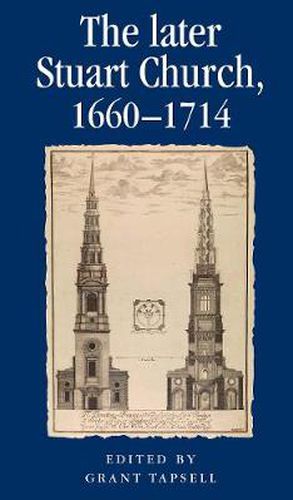Readings Newsletter
Become a Readings Member to make your shopping experience even easier.
Sign in or sign up for free!
You’re not far away from qualifying for FREE standard shipping within Australia
You’ve qualified for FREE standard shipping within Australia
The cart is loading…






The later Stuart Church, 1660-1714 features nine essays written by leading scholars in the field and offers new insights into the place of the Church of England within the volatile Restoration era, complementing recent research into political and intellectual culture under the later Stuarts.
Sections on ideas and people include essays covering the royal supremacy, the theology of the later Stuart Church and clerical and lay interests. Attention is also given to how the Church of England interacted with Protestant churches in Scotland, Ireland, continental Europe and colonial North America. A concluding section examines the difficult relationships and creative tensions between the established Church in England, Protestant dissenters, and Roman Catholics.
The later Stuart Church is intended to be both accessible for students and thought-provoking for scholars within the broad early modern field. – .
$9.00 standard shipping within Australia
FREE standard shipping within Australia for orders over $100.00
Express & International shipping calculated at checkout
The later Stuart Church, 1660-1714 features nine essays written by leading scholars in the field and offers new insights into the place of the Church of England within the volatile Restoration era, complementing recent research into political and intellectual culture under the later Stuarts.
Sections on ideas and people include essays covering the royal supremacy, the theology of the later Stuart Church and clerical and lay interests. Attention is also given to how the Church of England interacted with Protestant churches in Scotland, Ireland, continental Europe and colonial North America. A concluding section examines the difficult relationships and creative tensions between the established Church in England, Protestant dissenters, and Roman Catholics.
The later Stuart Church is intended to be both accessible for students and thought-provoking for scholars within the broad early modern field. – .